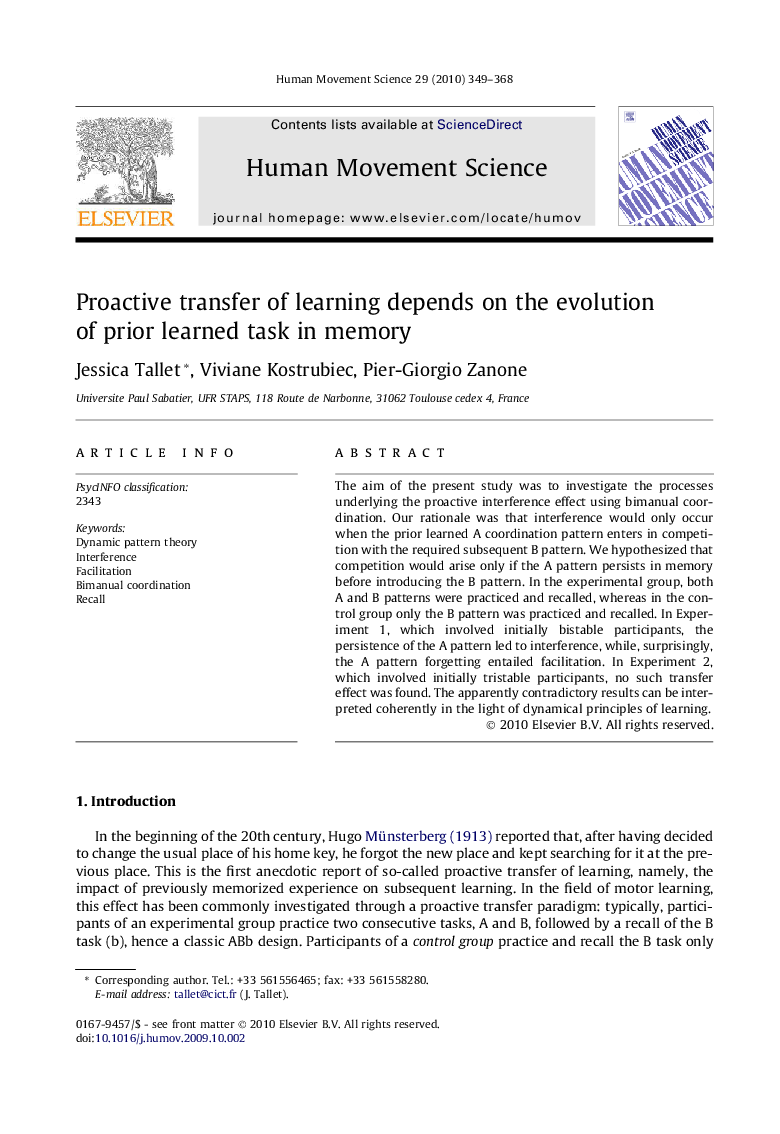| Article ID | Journal | Published Year | Pages | File Type |
|---|---|---|---|---|
| 928680 | Human Movement Science | 2010 | 20 Pages |
The aim of the present study was to investigate the processes underlying the proactive interference effect using bimanual coordination. Our rationale was that interference would only occur when the prior learned A coordination pattern enters in competition with the required subsequent B pattern. We hypothesized that competition would arise only if the A pattern persists in memory before introducing the B pattern. In the experimental group, both A and B patterns were practiced and recalled, whereas in the control group only the B pattern was practiced and recalled. In Experiment 1, which involved initially bistable participants, the persistence of the A pattern led to interference, while, surprisingly, the A pattern forgetting entailed facilitation. In Experiment 2, which involved initially tristable participants, no such transfer effect was found. The apparently contradictory results can be interpreted coherently in the light of dynamical principles of learning.
